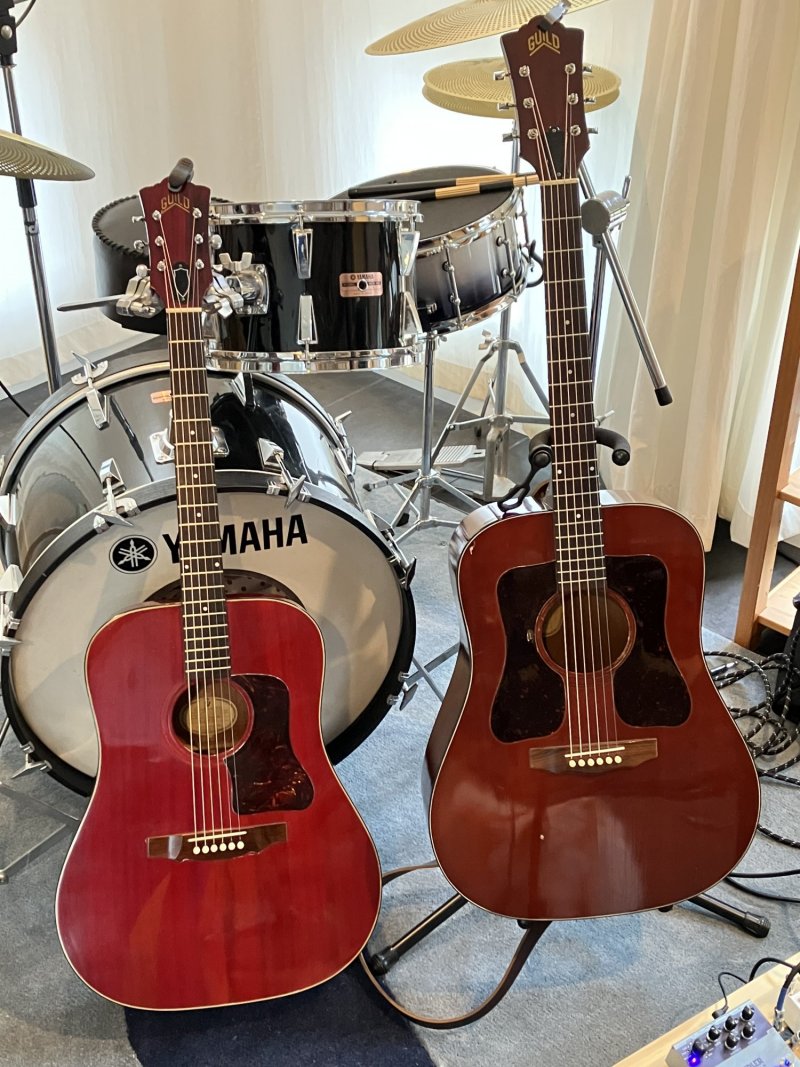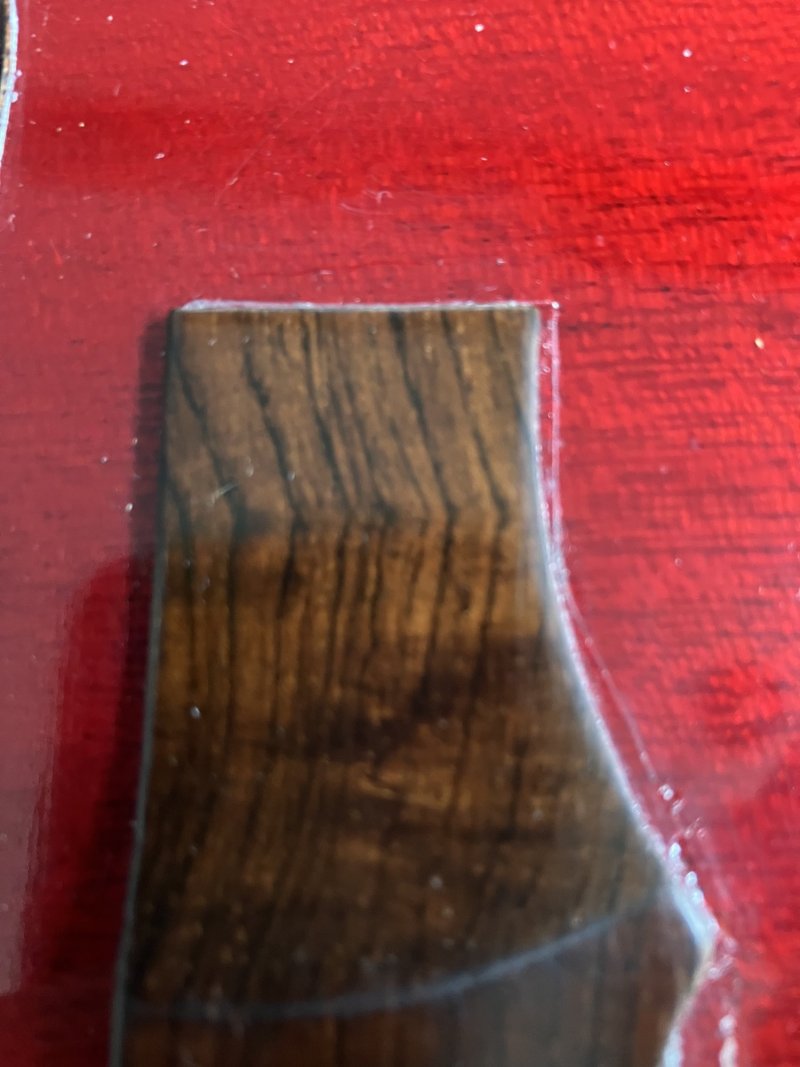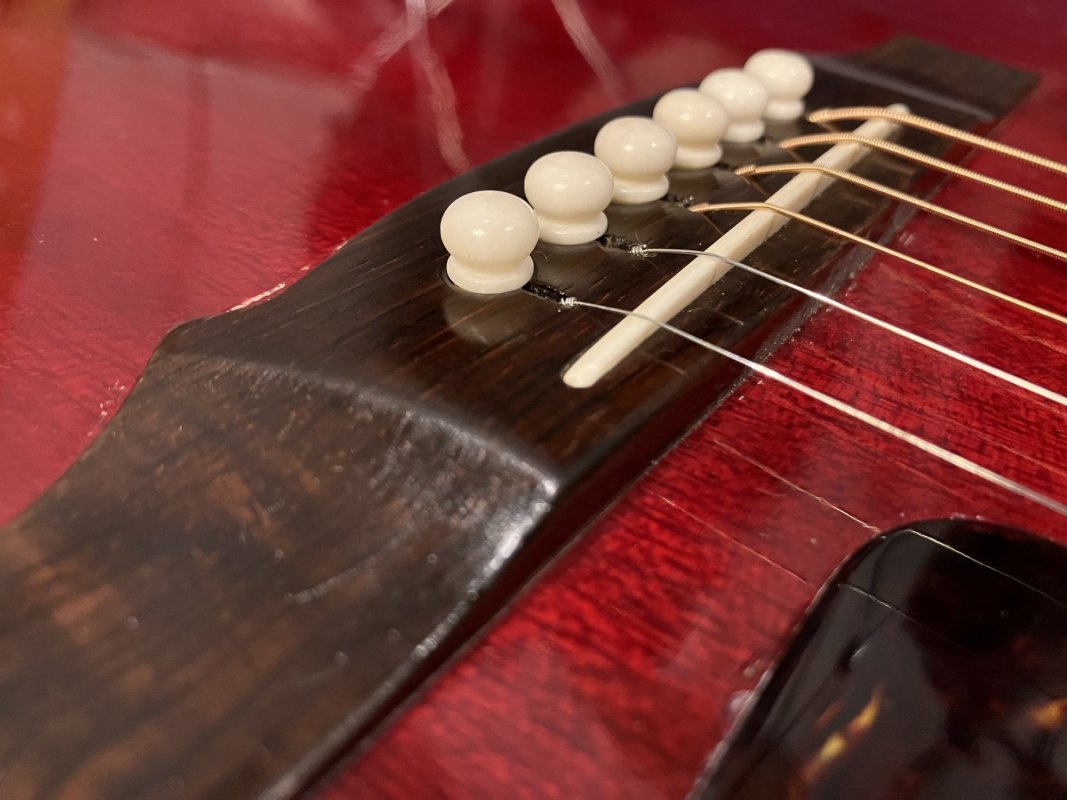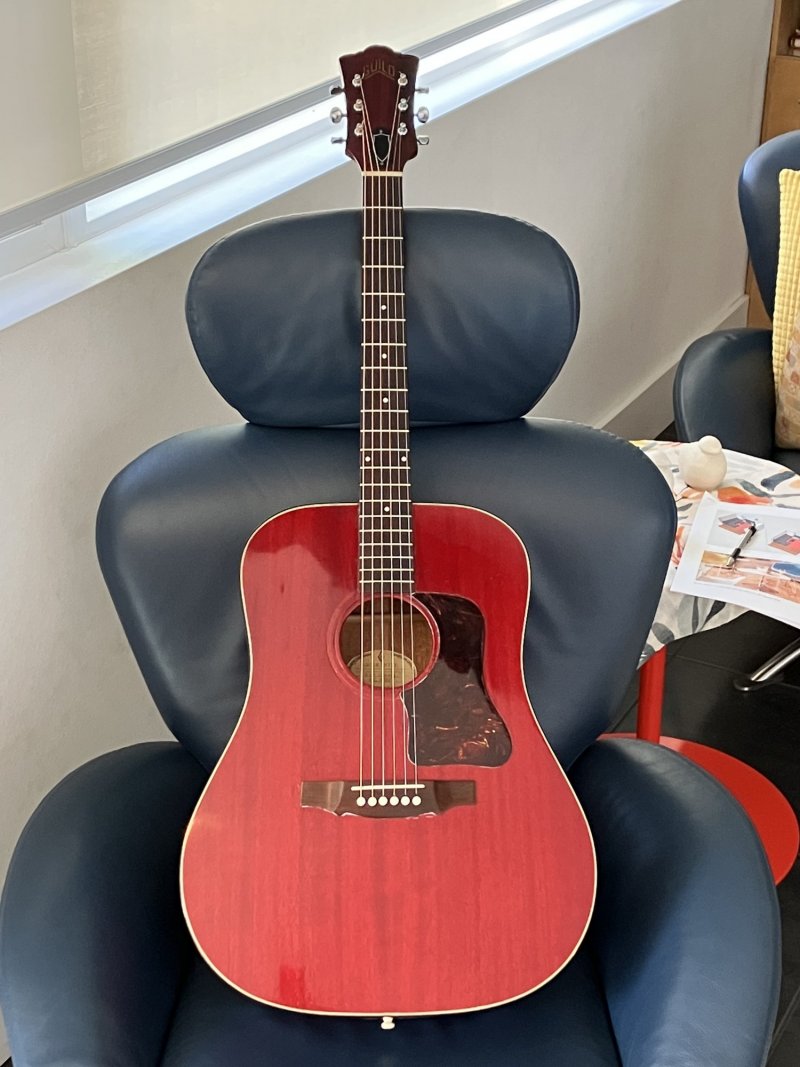E-Type
Member
- Joined
- Jun 5, 2017
- Messages
- 397
- Reaction score
- 347
I already have a 1974 archback version. From everything I have heard, I expected it to be darker and not as loud with the flat back and mahogany top. With the same strings (10s), the 1970 version is brighter than the ‘74 and damn near almost as loud (at least from my pov as player). The ‘74 is def a bit more boomy. Sound really projects out of it that one.
I was a little shocked by the 1/4” thick bridge. With the saddle about as low as it can go, the D-string is < 3/8” above the top. Luckily, the action is 5/64” so I can have a new 1/32” taller saddle made. I prefer action at 5/64”, but I can deal with 6/64”. I hope the neck will stay stable with extra light strings as any additional movement will mean a reset (I now have four guitars right on the edge).
I love the look and the tone. Anyone know the story behind the small pick guard? I think I’ve seen earlier ones with the larger one, so it might not have been a switch as some point in time.
The neck feels great, nut is 1-11/16”. Measuring fret heights, they seem to vary between 1/16” and 5/128”. But no buzzing and I don’t mind short frets. I suspect the bridge was off at some point (someone scored the finish all around the perimeter), but it looks like a lot of other D-25 ‘68-‘70 bridges.
The serial # is OG 590 which means it isn’t on the Guild list. I am guessing it’s therefore a 1970. Did Guild really only make 91 D-25s in 1968 and 30 of them in 1969?
I was a little shocked by the 1/4” thick bridge. With the saddle about as low as it can go, the D-string is < 3/8” above the top. Luckily, the action is 5/64” so I can have a new 1/32” taller saddle made. I prefer action at 5/64”, but I can deal with 6/64”. I hope the neck will stay stable with extra light strings as any additional movement will mean a reset (I now have four guitars right on the edge).
I love the look and the tone. Anyone know the story behind the small pick guard? I think I’ve seen earlier ones with the larger one, so it might not have been a switch as some point in time.
The neck feels great, nut is 1-11/16”. Measuring fret heights, they seem to vary between 1/16” and 5/128”. But no buzzing and I don’t mind short frets. I suspect the bridge was off at some point (someone scored the finish all around the perimeter), but it looks like a lot of other D-25 ‘68-‘70 bridges.
The serial # is OG 590 which means it isn’t on the Guild list. I am guessing it’s therefore a 1970. Did Guild really only make 91 D-25s in 1968 and 30 of them in 1969?



